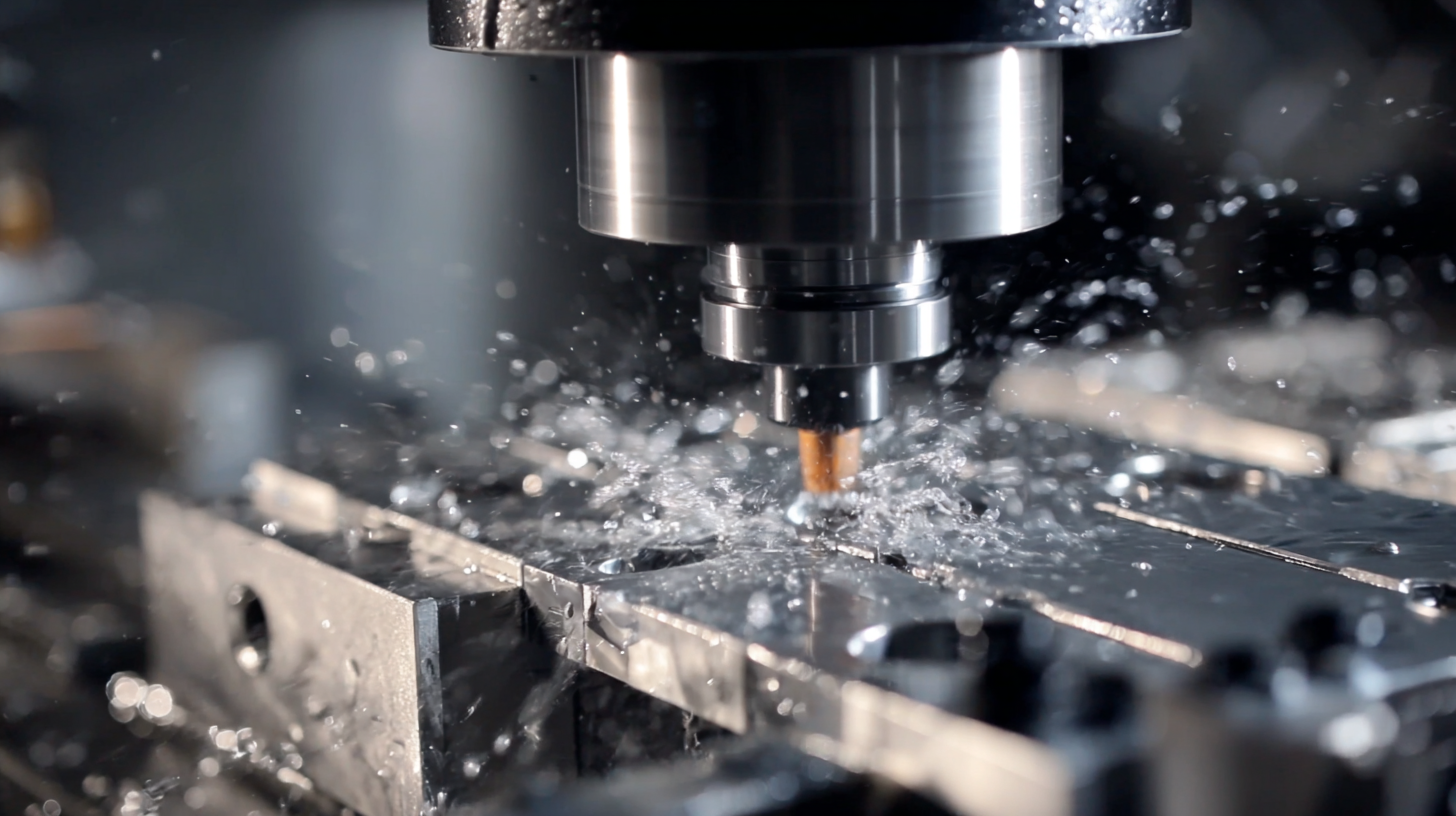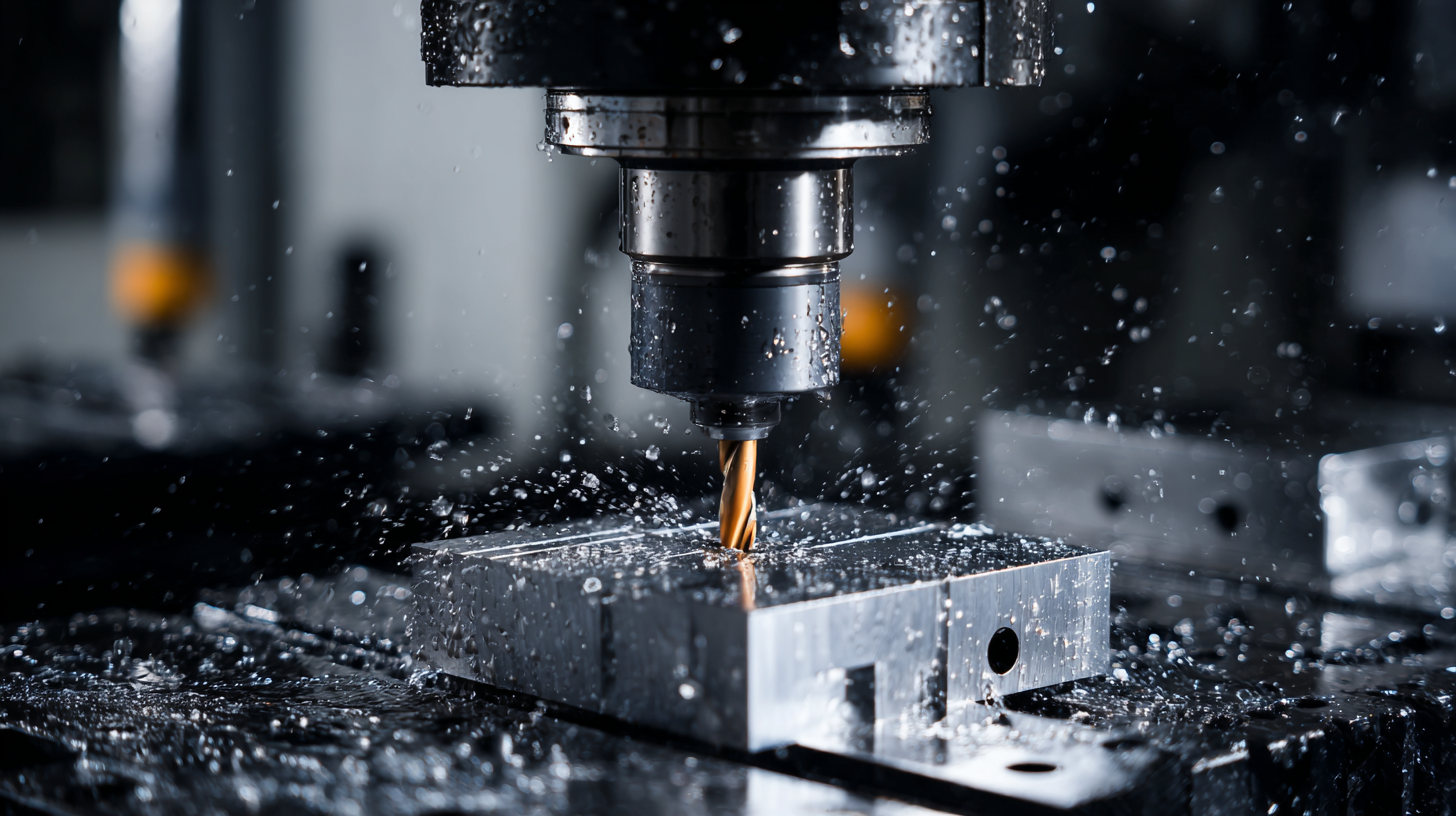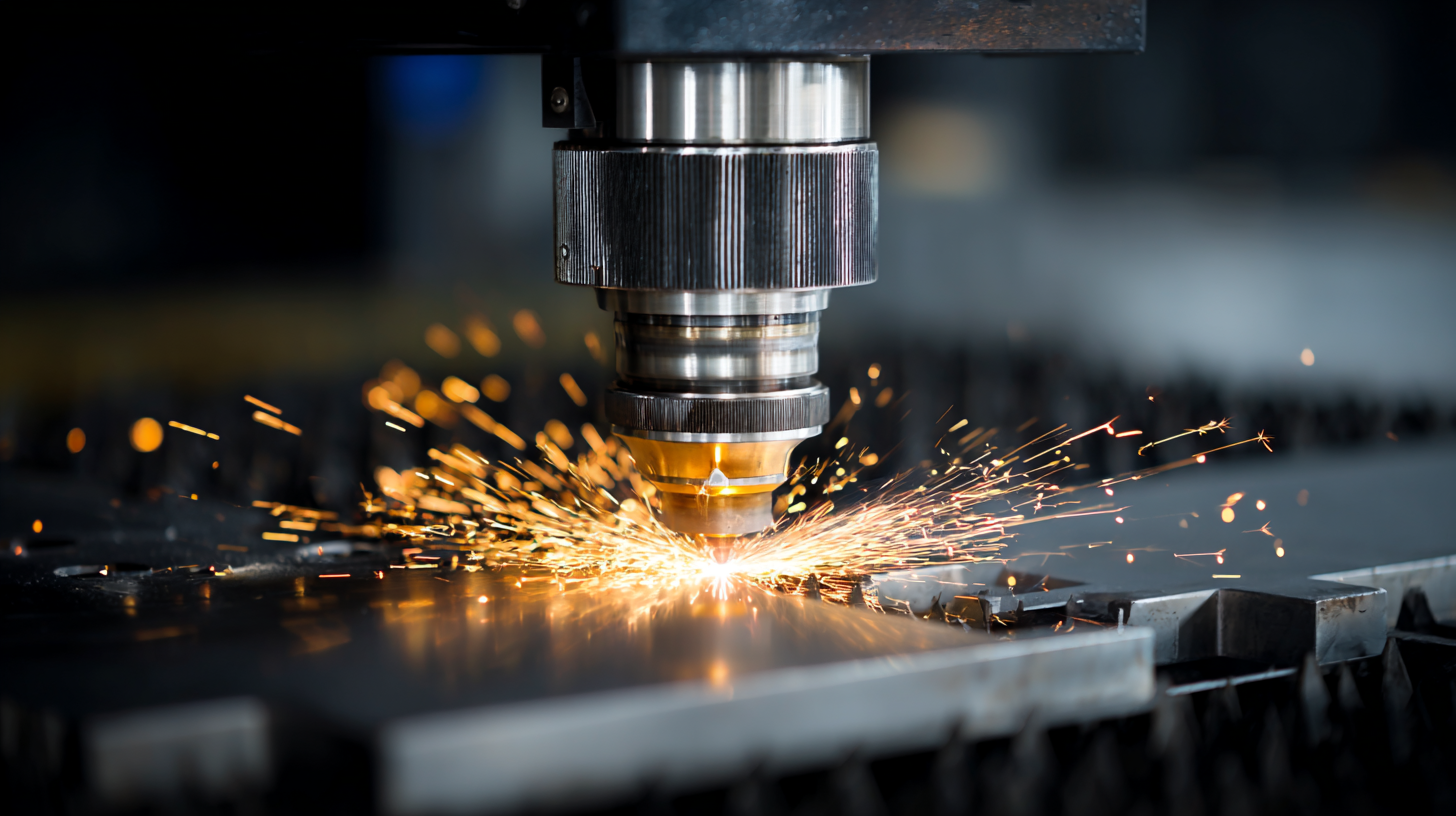
- sales@bjbod.com
- Mon - Sat at 7:00AM to 9:00PM

In the rapidly evolving landscape of modern manufacturing, Metal CNC applications have emerged as a cornerstone for innovation and efficiency. The precision and versatility offered by CNC (Computer Numerical Control) machining have redefined how industries such as aerospace, automotive, and electronics approach production, enabling them to achieve superior quality and reduced lead times. This blog will delve into a range of exemplary case studies showcasing the transformative impact of Metal CNC technology across various sectors.

From the intricate designs of aerospace components to the robust fabrications in the automotive field, these applications underscore the effectiveness of CNC processes in enhancing productivity while maintaining intricate specifications. Join us as we explore these innovative examples, demonstrating the significant role of Metal CNC in driving modern manufacturing forward.
In the realm of modern manufacturing, the applications of metal CNC machining are both versatile and transformative. This technology has revolutionized how complex metal components are fabricated, enabling manufacturers to produce high-precision parts with remarkable efficiency. From aerospace to automotive industries, CNC machining techniques such as milling, turning, and laser cutting empower companies to meet demanding specifications while reducing waste. The ability to easily scale production runs means that even small batches can benefit from the precision of CNC machining, making it an invaluable tool for innovative manufacturers.
Tips for maximizing your CNC machining processes include investing in regular maintenance of your equipment to prevent downtime and ensure consistent output quality. Additionally, utilizing advanced programming software can streamline your workflow and improve accuracy. Consider implementing automation where possible to enhance productivity and free up valuable labor resources for more intricate tasks.
Another innovative application to explore is the integration of additive manufacturing with CNC processes. Hybrid machines that combine both methods allow for the rapid prototyping of complex geometries, significantly shortening lead times. By leveraging these cutting-edge techniques, manufacturers can refine their capabilities and stay ahead of the competition in a fast-paced market.
| Application Area | Techniques Used | Materials Processed | Industry | Benefits |
|---|---|---|---|---|
| Aerospace Components | Precision Milling, 5-Axis Machining | Aluminum, Titanium | Aerospace | High Accuracy, Lightweight Parts |
| Automotive Parts | CNC Turning, Laser Cutting | Steel, Aluminum Alloys | Automotive | Reduced Production Time, Cost Efficiency |
| Medical Devices | CNC Milling, EDM | Stainless Steel, Plastics | Healthcare | Precision Manufacturing, Biocompatibility |
| Custom Fixtures | CNC Routing, Prototyping | Aluminum, Plastic | Manufacturing | High Customization, Quick Turnaround |
| Artistic Metalworks | Laser Engraving, CNC Plasma Cutting | Mild Steel, Copper | Art & Design | Creative Designs, Unique Aesthetics |
In the realm of modern manufacturing, the unique characteristics of various metal products play a pivotal role in determining their applications, performance, and overall effectiveness. Metals like aluminum, stainless steel, and titanium each possess distinct properties that influence their suitability for specific industries. For instance, aluminum’s lightweight nature and excellent corrosion resistance make it a favorite in the aerospace and automotive sectors. Conversely, stainless steel, renowned for its strength and durability, is commonly used in medical equipment and kitchen appliances where hygiene and longevity are paramount.
Additionally, the integration of CNC technology has revolutionized the way these metals are processed and utilized. Computer Numerical Control (CNC) machining enables manufacturers to achieve unparalleled precision and repeatability in crafting complex designs. This capability allows for the customization of metal components to meet stringent specifications, thereby enhancing product performance. Emerging applications, such as 3D metal printing and advanced CNC milling for creating intricate geometries, are pushing the boundaries of traditional manufacturing, showcasing how understanding the unique characteristics of metal can lead to innovative solutions tailored for contemporary challenges in various sectors.
The evolution of digital manufacturing technologies has drastically enhanced productivity across various industries, particularly through the innovative applications of Metal CNC (Computer Numerical Control) machining. Industries such as aerospace, automotive, and medical are utilizing Metal CNC applications to streamline production processes, improve precision, and reduce waste. For instance, data shows that the global CNC machine market is expected to reach approximately $100 billion by 2026, reflecting a CAGR of around 6% from 2021. This growth is largely driven by the increasing demand for high-quality, customized metal components in critical applications.
In the realm of metal forming, in-process monitoring strategies have become essential. These methods focus on real-time measurement of essential parameters, including force and temperature, which play a crucial role in ensuring the integrity and accuracy of formed components. A recent review highlighted that employing advanced monitoring techniques significantly reduces defects and operational downtime. Furthermore, technologies such as directed energy deposition (DED) have been revolutionized by artificial intelligence, enhancing efficiency and enabling rapid prototyping in sectors that require complex geometries and intricate designs. The integration of AI in manufacturing not only improves operational workflows but also paves the way for innovative applications that cater to the unique needs of different industries.

When embarking on a manufacturing project, selecting the right CNC machine is a crucial decision that can significantly affect the project's success. With the global CNC machine market expected to reach USD 100 billion by 2025, manufacturers must consider key factors such as precision, material compatibility, and production volume. According to a report by Grand View Research, the demand for CNC machines is driven by their ability to produce intricate parts with high accuracy, emphasizing the importance of proper equipment selection.
First, evaluate the specific requirements of your project. Consider the materials you will be working with; for instance, if you’re focusing on various metals, a machine that supports multi-axis capabilities will enhance your versatility. A study by Markets and Markets highlights that multi-axis machines are gaining traction, projected to grow at a CAGR of 5.4% from 2020 to 2025, indicating that investing in advanced technology can future-proof your operations. Additionally, consider production volume needs—higher volume projects may require more robust machines equipped with advanced automation features to maximize efficiency. By carefully assessing these criteria, you can select a CNC machine that aligns with your project goals and operational capabilities, ultimately driving your manufacturing success.
The global CNC machine market is projected to experience significant growth, expanding from $101.22 billion in 2025 to $195.59 billion by 2032, with a compound annual growth rate of 9.9%. This surge is driven by ongoing advancements in metal CNC technology, emphasizing the integration of innovative processes like additive manufacturing (AM) and powder metallurgy. These technologies are revolutionizing traditional manufacturing by allowing for the creation of complex geometries and lightweight structures that were previously unattainable.

Recent developments in metal 3D printing, particularly through laser sintering of metal powders, represent a substantial leap forward in CNC applications. This method not only enhances material efficiency but also reduces waste by building parts layer by layer. With the capabilities of CAD platforms, it’s now more feasible for manufacturers to harness powerful modeling tools for these innovative procedures. As these technologies mature and new materials are introduced, the landscape of modern manufacturing is evolving, leading to smarter and more sustainable practices that could redefine industry standards in the years to come.